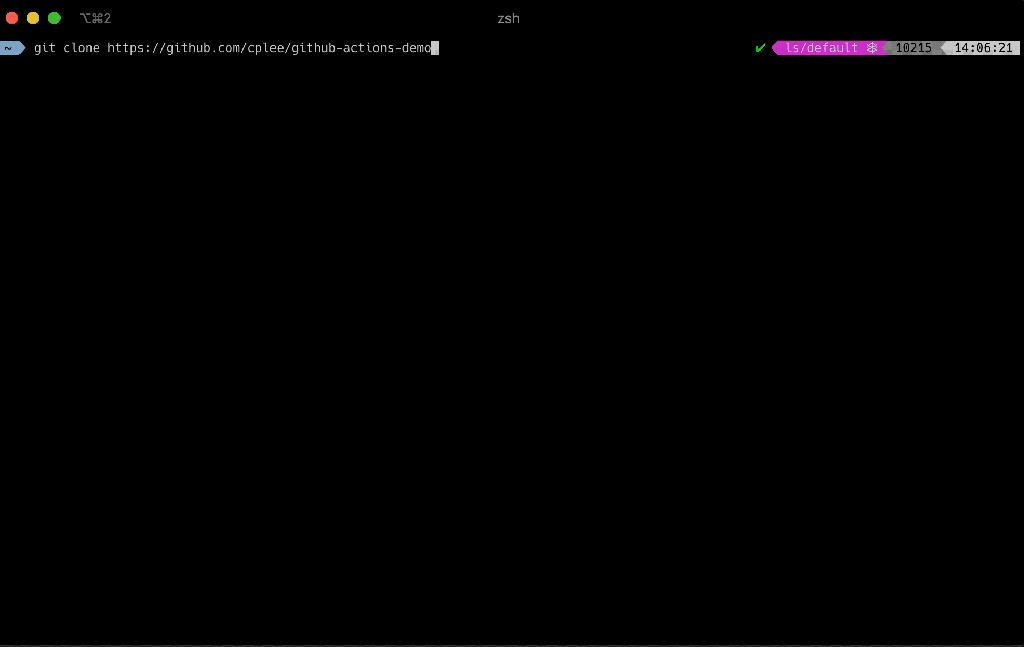Michelle Duke
I'm a Content Producer working in tech & innovation. Known as the “Hackathon Queen” 👑 I'm on the GitHub DevRel team and love sharing stories from our amazing community of developers.
The GitHub community is capable of incredible things and GitHub Actions is the tool. Do you want to automate your workflow, increase your productivity, and empower your developer experience? Then…

The GitHub community is capable of incredible things and GitHub Actions is the tool. Do you want to automate your workflow, increase your productivity, and empower your developer experience? Then read on for inspiration.
We’ve been sharing lots of stories from developers like you over the last couple of weeks. These developers are some of our earliest GitHub Actions adopters. This is your chance to hear about their projects, challenges, and what lessons learned from building a GitHub Action.
On today’s post, you can read about Casey Lee (@nektos), the creator of act. Act is a tool to run GitHub Actions locally.
Casey has been working in tech for decades. For the last 20 years’ they’ve been architecting, building and supporting software systems for organizations. From startups to scaleups, big corporates, and other companies. Casey has plenty of experience as developer and has even worked at some of the Fortune 500 enterprises. Why? Because they love what they do. As Casey puts it:
“I love helping organizations improve the speed and safety with which they deliver software.“
There’s a reason for everyone (well, probably), and there’s definitely a reason why Casey built act. Act is a tool to run GitHub Actions locally. There’s two main reasons why you would want to do this. The first is to gain rapid feedback. Instead of committing and pushing whenever you want to test your changes, you can create workflow files for your changes embedded in GitHub Actions to run locally. This can save you a lot of time. As Casey puts it:
“The feedback loop for developing GitHub actions and workflows was a bit slow, having to commit/push every time I wanted to test a change. I wanted a way to get fast feedback as I was building out my actions.“
The second reason for wanting to do this, is to replace your Makefile so you can have a local task runner. That way you don’t have to repeat yourself anymore!

Casey has plans to improve act and build more features:
“There are quite a few edge cases in GitHub Actions that are not yet implemented in `act`, for example job services (e.g. a redis service or mysql service).“
Keep an eye on Casey’s repo for these changes and maybe even more Actions!
Some people like how easy it is to get started with Actions, others love the huge amount of Actions available on the marketplace. For Casey, they “love how easy it is to compose large workflows from reusable actions.”
There’s literally thousands of Actions on the GitHub marketplace and you can use them for whatever workflow you want. Is your workflow small or large? If there’s not something on the marketplace you like, then make your own, or simply build on top of someone else’s. This is one of the coolest things about Actions!
Like many software projects, there’s always lots of challenges. Casey says their biggest challenge when it comes to GitHub Actions is “learning all the capabilities that the platform has.” Yep there’s a lot. After having officially launched in November, not only are there thousands of Actions on the Marketplace, there’s also lots of documentation available. When it comes to Actions, the possibilities really are endless. Basically think about what new feature you’d like on GitHub, or something you can automate, and you can bet you’ll be able to create a GitHub Action for it.
So, are you ready to create your Action? Have you got some inspiration? Great, then start building your Action today. If you’re not sure where to begin, check out the GitHub Actions course on Learning Lab course. You can also view the act Action, and thousands of other Actions on the GitHub Marketplace.
We hope you enjoyed our interview with Casey Lee. You can check out more cool content from Casey over on their blog. Plus read about our other GitHub Action heroes from previous weeks.
We also recently ran the GitHub Actions Hackathon where lots of cool Actions like act were built. You can check them all out on the GitHub Hackathon website. Keep an eye on the page for more information on upcoming hackathons and more.

AI can help you code faster, but knowing why the code works—and sharpening your human-in-the-loop skills—is what makes you a great developer.

Learn how to spin up a GitHub Issue, hand it to Copilot, and get a draft pull request in the same workflow you already know.

We’ll decode these two tools—and show you how to use them both to work more efficiently.